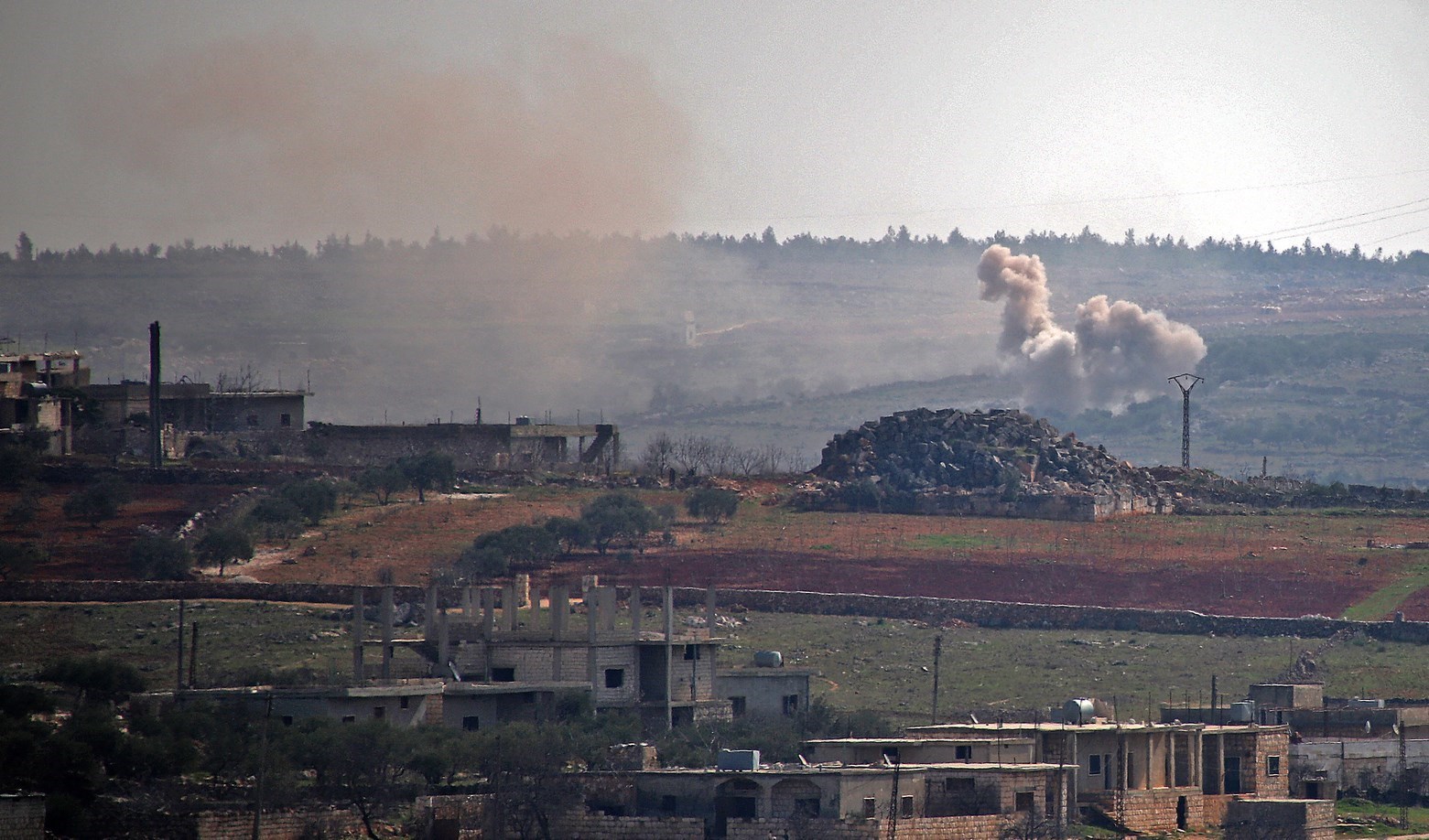Syrian and Russian statements regarding the strikes launched by the Syrian army, with the support of Russian Airforce, reveal the complexity of the field situation in Idlib and to what extent the opposition is located in and around the city. It also reveals the difficulty with which the Syrian and Turkish diplomats have reached a new understanding regarding Idlib and the normalization of relations between both countries. The strikes are likely to further increase especially given that Syrian and Russia see these as a response to the attacks by militant groups on Syria, using drones.
This issue is further compounded by the military confrontations that have erupted of late including the military operation launched by the Syrian army, with Russian support, in the Daraa region and Jisr al-Shughur, last month. Russia and Syria have also vowed to besiege armed groups opposed to the Syrian regime prompting questions regarding the intentions of Syria and Russia towards the militant groups located in Idlib.
Timing that Couldn’t be Better
The Syrian strikes coincided with new developments in Syria, which included two strikes on the Syrian Airforce in the Deraa Countryside. The other major development was the targeting of a market by the Syrian and Russian Airforce which left 9 civilians dead and over 61 injured.
The recent bombing in Idlib is noteworthy due to its timing, occurring shortly after the conclusion of the “Astana 20” talks on June 20. This incident also coincided with heightened Russian American tension in northern Syria and an escalation of conflicts along the northern Syrian border. Notably, the Turkish military intensified its strikes, specifically targeting the positions of the “Kurdish People’s Protection Units,” which serve as the military wing for the “Syrian Democratic Forces” (SDF).
Various Considerations
There exist numerous factors that elucidate the upsurge of Syrian offensives, facilitated by Moscow, in Idlib during this specific juncture. The foremost among these motives are:
1- The Syrian attacks in Idlib, supported by Russia, are closely tied to Syria’s exploitation of Turkey’s efforts to normalize relations with the Syrian regime. The aim is to distort the prevailing perception of opposition groups and armed militias in Idlib, particularly in light of recent bombings. Notably, the marches occurred in strategic locations for the Syrian regime and Russian forces, namely the areas of Jourin in the countryside of Hama and Qardaha in the countryside of Latakia. These attacks also appear to be part of Moscow and Damascus’s strategy to exert greater pressure on the armed groups in Idlib, with the ultimate goal of reopening the international road “M4”.
2- Syria, Russia, and potentially Turkey are engaging in these attacks with the aim of undermining the strength of “Hay’at Tahrir al-Sham.” This group currently holds the largest and most dominant military presence in Idlib, but its interests appear to clash with Turkish strategies in Syria. Consequently, the level of coordination between “Hay’at Tahrir al-Sham” and Ankara has significantly diminished. It is worth noting that “Tahrir al-Sham,” despite being classified as a terrorist organization, wields significant influence in northwestern Syria. However, it has not been involved in the agreements and negotiations such as the “Astana” talks. In fact, it actively opposes the majority of these agreements, including the Sochi agreements signed between Turkey and Russia in 2019 and 2020, as well as those established by regional powers and international organizations involved in the Syrian crisis.
3- The Syrian attacks on Idlib can be attributed, at least partially, to the objective of Damascus and Moscow to exert greater pressure on Ankara. This pressure is a response to Ankara’s persistent threat of initiating a fresh military operation in northern Syria, aimed at countering the “Syrian Democratic Forces” (SDF). Additionally, Ankara’s refusal to comply with the Syrian regime’s demands, which include the normalization of relations and the withdrawal of Turkish military forces from Syrian territory, has further contributed to the escalating tension.
In this particular context, the recent military operations aimed at Idlib have the potential to encircle numerous Turkish security checkpoints by the Syrian army. Conversely, the Syrian army’s current positions suggest its determination to persist in its territorial advancements in the western regions of the country, with the backing of its Russian ally. Simultaneously, both Damascus and Moscow are expected to exert pressure in order to escalate the offensive against Idlib, particularly targeting the key strongholds of pro-Ankara factions.
4- The United States of America is currently examining the repercussions of the recent “Wagner” rebellion on the Russian military presence and operations in conflict zones, particularly in the Syrian arena. Multiple reports have highlighted this issue. Additionally, it has been disclosed by certain observers that Russian President Vladimir Putin conveyed a message to Damascus through Russian Deputy Foreign Minister Sergey Vershinin a few days ago. This action is part of Russia’s proactive measures to mitigate potential risks, particularly given the deployment of “Wagner” forces in proximity to Syrian oil fields and within areas governed by the Turkey-Russia de-escalation agreements. Furthermore, it is worth noting that there are over 3,000 Syrian individuals who have been enlisted under the command of the “Wagner” forces within Syria. Conflicting reports exist regarding the withdrawal of “Wagner” elements from their strategically positioned locations in Syria along the contact lines, and the subsequent impact on the battle fronts. This is particularly significant considering that “Wagner” elements have acquired extensive knowledge about the dynamics of the conflict in Syria during their prolonged engagement in the crisis.
In this particular context, the recent offensive on Idlib conducted by the Syrian forces, with the backing of Russian aerial assistance, could potentially be interpreted as a communicative gesture towards the nations actively engaged in the Syrian crisis. Notably, this includes the United States of America, Turkey, and Iran. The underlying message conveyed is that the “Wagner” insurgency, which serves as the foundation for Moscow’s endeavors against Syrian territory, should not be misconstrued as a sign of diminished field influence. On the contrary, it emphasizes the Russian military’s competence in effectively orchestrating multifaceted operations across novel battlegrounds.
The Syrian assault on Idlib, backed by Russian forces, has the potential to initiate a fresh wave of military escalation against the various groups and factions operating in the region. This development arises from recent advancements in both the field and political landscape of the Syrian conflict, coupled with the potential consequences that the uprising may impose. Notably, the Russian “Wagner” group executed the attack, which was swiftly controlled; however, its enduring repercussions persist.


